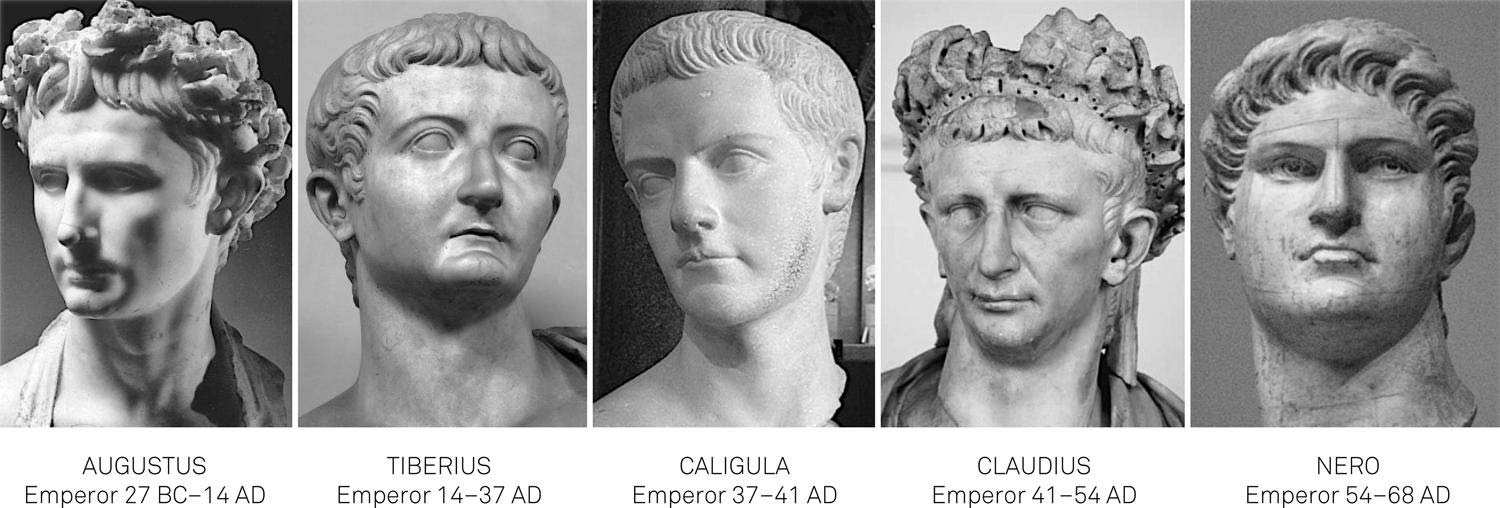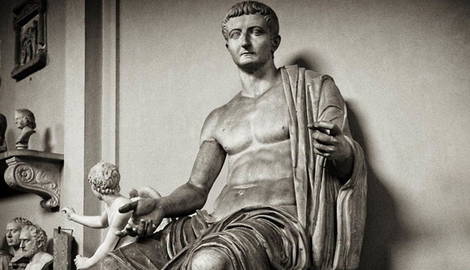
Emperor Tiberius (r. 14 – 37 CE) was the second Emperor to rule the Roman Empire, succeeding his adoptive father Augustus. A military might, Tiberius demonstrated great bravery in his early career, but following a series of difficult events, he became increasingly miserable and gloomy, earning more enemies than friends. To quell his rising paranoia, he turned harsh and dictatorial from afar, trusting no one and introducing terrifying and unreasonable treason trials, paving the way for the bitter cruelty of Emperors to follow. Here are some of the most fascinating stories surrounding his life.
1. Emperor Tiberius Changed His Name

Son of Tiberius Claudius Nero and Livia Drusilla, Emperor Tiberius was born under the name Tiberius Claudius Nero, which he later changed to Tiberius Julius Caesar, following his adoption by Emperor Augustus.
2. Tiberius Claudius Nero Kept His Son Away From Augustus

In his early years, Tiberius was raised in exile, because his father, Tiberius Claudius Nero, strongly opposed the views of Emperor Augustus, deliberately keeping his family away from the Roman Empire.
3. He Had a Controlling Mother

It is suspected that Tiberius’ mother Livia Drusilla (58 BCE – 29 CE) had grand aspirations for her son and was therefore highly controlling. When she divorced her first husband, she married Emperor Augustus, which some saw as a manipulative move to make her son heir to the throne. Some even say she eventually murdered Augustus to speed along the process.
4. Alternate History: Augustus Courted Livia
In another version of history, others say it was Augustus who hunted Livia, divorcing his then wife, Scribonia, just after their daughter was born, and forcing Livia to divorce Tiberius’ father so they could marry.
5. Tiberius Was Forced to Divorce His First Wife for Another

Tiberius was pushed out of his first marriage by his step-father Augustus, who was the Emperor. Married to his first love, Vipsania Agrippina, they already had a child together, while Agrippa was pregnant with their second. But he was forced to divorce her and marry Augustus’s daughter Julia instead, becoming step-father to her two children instead. Tiberius hated Julia, who was a serial adulteress; in order to have her exiled, he exposed her many infidelities to the world. Meanwhile he longed desperately for his first love, falling into breakdown if he saw her in the street, prompting Augustus to make sure they would never see each other again. Many believe this experience changed Tiberius’ character forever, turning him into a bitter misanthrope.
6. Tiberius Wasn’t Meant to Become Emperor

Tiberius wasn’t first in line to take up the throne, and he wasn’t too keen on the idea either. Augustus had been preparing both his grandsons Gaius and Lucius to succeed him, but when they both suspiciously died in their late adolescence within 18 months apart, Tiberius was next in line. To commemorate their deaths, a temple was erected in Nimes, France. When Tiberius was in his 40s, Augustus adopted him, in order to ensure he would take up the position.
7. Tiberius Against His Mother
After reluctantly becoming Emperor, one of the first decisive moves he made was to push out his controlling mother. He banned her from public affairs, forbid her to host a wake for Augustus, and refused all future contact with her. Even when she was dying, he refused to visit her, and had little involvement in her funeral.
8. Tiberius Helped Found The Julio-Claudian Dynasty

Tiberius ruled under the Julio-Claudian dynasty, along with the first four emperors of the Roman Empire: Augustus, Claudius, Caligula and Nero. The name came from the two primary families to which these emperors belonged – the Julia and the Claudia.
9. A Long Military Career
Before becoming Emperor, Tiberius was an impressive army general, leading with distinction in a series of military campaigns, including securing Pannonia in the east and stabilising the area surrounding the Rhine in the North. In fact, he already had a long career in the military, and did not become Emperor until he was 55 years old.
10. He Was Once a Respected Emperor
In his early years as Emperor, Tiberius’ reign ran smoothly. He followed his stepfather’s example, granting the Roman Senate respect and authority and was a diligent and scrupulous administrator. He even avoided any major conflicts, wars or campaigns and maintained the city’s borders and finances well. But unfortunately, his sour demeanour, paranoid outlook and unusual behaviour sullied his reputation for eternity.
11. Germanicus Became His Son and Heir

Following the death of his brother Drusus, Tiberius adopted his nephew Germanicus and raised him from the age of six as his own son. Germanicus became heir of Augustus and a great military figure from a young age. Sadly, Germanicus died before the end of the emperor’s reign.
12. Just One Memorial

Unlike many Roman Emperors, who left behind vast monuments, statues and temples in their honour, Tiberius had only one temple built in commemoration of his name, once located in the Greek city of Smyrna, now modern-day Turkey.
13. The Emperor Flees Rome
When Tiberius’ son with his first beloved wife died, Tiberius made a retreat to the Island of Capri. Moving into a villa complex, he remained there for the rest of his reign in a form of semi-retirement, while the Empire was still under his name. But this retreat from Rome was seen by the public as a form of desertion, and he soon became despised by the Roman public.
14. In Rome, a New Leader

While in exile, Tiberius left his trusted ally Lucius Aelius Sejanus, head of the Praetorian Guard, virtually in charge of Rome, in all but name. Tyrannical and unpredictable, Sejanus killed anyone who threatened his newfound power. But when it was discovered that Sejanus was having an affair with the emperor’s niece, and was planning to overthrow both Tiberius and his successor Caligula, the emperor swiftly had Sejanus, and all his friends, executed.
15. Rumors About the Emperor’s Retreat

Nobody really knows what Tiberius accomplished on the Island of Capri. Roman historian Suetonius claimed he indulged in an endless stream of strange, sexually depraved activities, but others believe this was rumour-mongering spread by his many enemies. He was said to enjoy excessive drinking and debauchery, and displayed a series of graphic, sexually explicit paintings on his walls, which did little to improve his public reputation. But others say his retreat was much more straightforward: to simply get away from his mother Livia, who was still trying to control his life.
16. The Emperor Trusted No One

Following the execution of Sejanus, Tiberius became increasingly suspicious and paranoid, and the number of treason trials in Rome increased dramatically as he tried to protect his position from afar. Many seemingly innocent people were executed or exiled as he veered towards madness, while people lived in fear of his tyrannical and unreasonable rules.
17. Caligula Ensures His Emperorship
Tiberius eventually died when he was 77 years old. Roman historian Tacitus claimed he seemed to have dropped dead during a banquet but rose to life again soon after. His direct successor, Caligula, son of Germanicus, had already begun celebrating his new role as Emperor, but when he saw that Tiberius was still alive, he had one of his allies smother him to death. Some speculate that Caligula had poisoned him during a meal to get him out of the way.
18. Public Opinion of Emperor Tiberius
In stark contrast with Augustus, Tiberius was despised rather than loved by the public. When they discovered he died, a mob gathered in the streets, chanting “To the Tiber with Tiberius!”.
19. An Unusual Place for His Remains

Despite his poor legacy, Tiberius was cremated and his remains were laid to rest in the Mausoleum of Augustus, alongside his adoptive father and predecessor.
20. Not So Bad After All

Notorious Emperor Caligula became the successor. He was a wasteful, indulgent and self-obsessed tyrant, whose ineptitude did much damage to the Roman Empire. After a four-year reign, he was assassinated.











